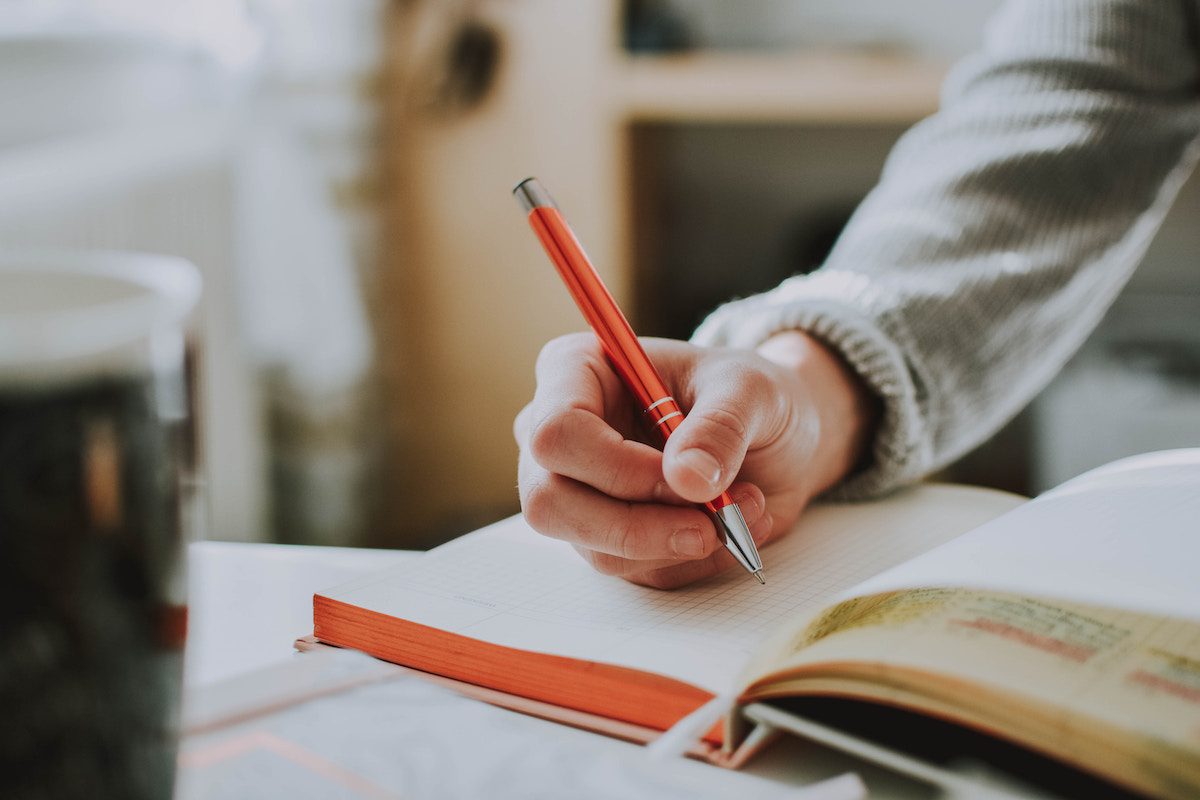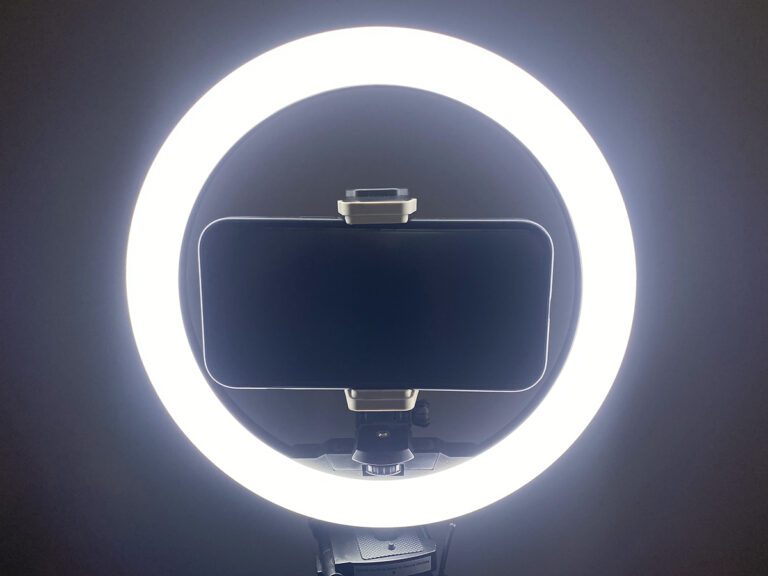I was recently visiting colleagues in Switzerland when the topic of conversation turned to the value of arts education. After reciting my well-crafted elevator speech and singing the praises of art teachers everywhere, one colleague turned to me and said, “It sounds like you are like the Swiss Army knife of teaching. You can solve any problem, and you dabble in a little bit of everything.”
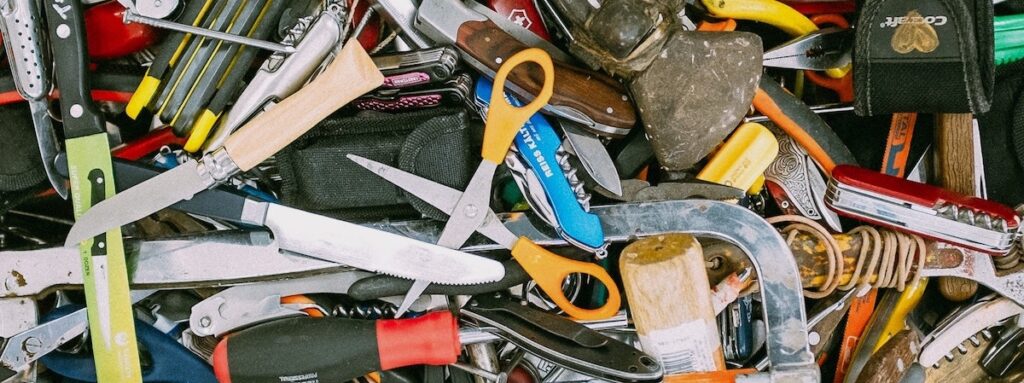
His comment forced me to pause, not just from the irony of mentioning Swiss Army knives in Switzerland, but at the perceptions of our field at large. It is not uncommon for us to be defined as jacks-of-all-trades prepared to handle just about anything.
I continued to think about this perception of art teachers. Was it good? Was it bad?
The Competence Continuum
Several weeks later, I found myself at an educational conference during which the speaker addressed this exact topic. Dr. Therese Huston is a cognitive scientist at Seattle University, and she referenced her book Teaching What You Don’t Know. In her eyes, all of us, regardless of whether we teach or not, function within varying levels of competence.
She described a continuum, from unconscious competence (being able to do something well without thinking about it) to unconscious incompetence (not knowing what you don’t know). As you can imagine, my interest was piqued.
The trick to understanding and then harnessing our competency levels is to critically consider our knowledge base, experience, and level of dedication regarding any particular subject, material, or process. In other words, we need to see how sharp our metaphorical Swiss Army knife is. This involves careful consideration concerning which tools we use, how often, and which we aren’t utilizing at all.
Defining Your Competence Levels
Below is a handout defining the different competency levels alongside guiding questions to help you determine your areas of competency. Let’s take a closer look at each.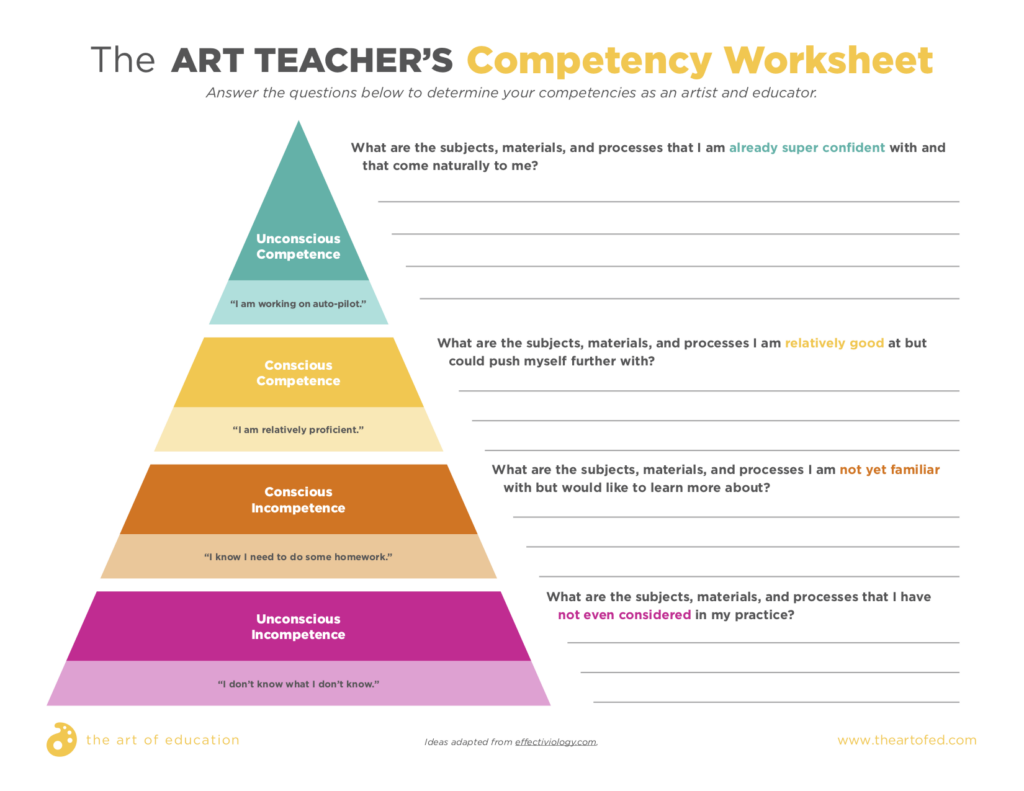
Unconscious Competence: “I am working on auto-pilot.”
If we begin at the top of the competence pyramid, we have unconscious competence. This includes skills and knowledge that come so naturally; they spill out without much preparation or consideration. You may find you’re unconsciously competent when composing a still life or presenting the elements and principles of design. As a double major in photography, I relate to this anytime I incorporate camera usage in the classroom.
Conscious Competence: “I am relatively proficient.”
Then you have your conscious competence. These include skills with which you are relatively proficient and confident. These subjects, materials, or processes may not come as fluidly as those unconscious competencies. These also require a touch more consideration and/or preparation on your part as the teacher. For me, this category would include oil paints. It’s not every day that I would pull that type of advanced material out for my students. So, it may take some reflective power to remember the best way to introduce the materials and steps.
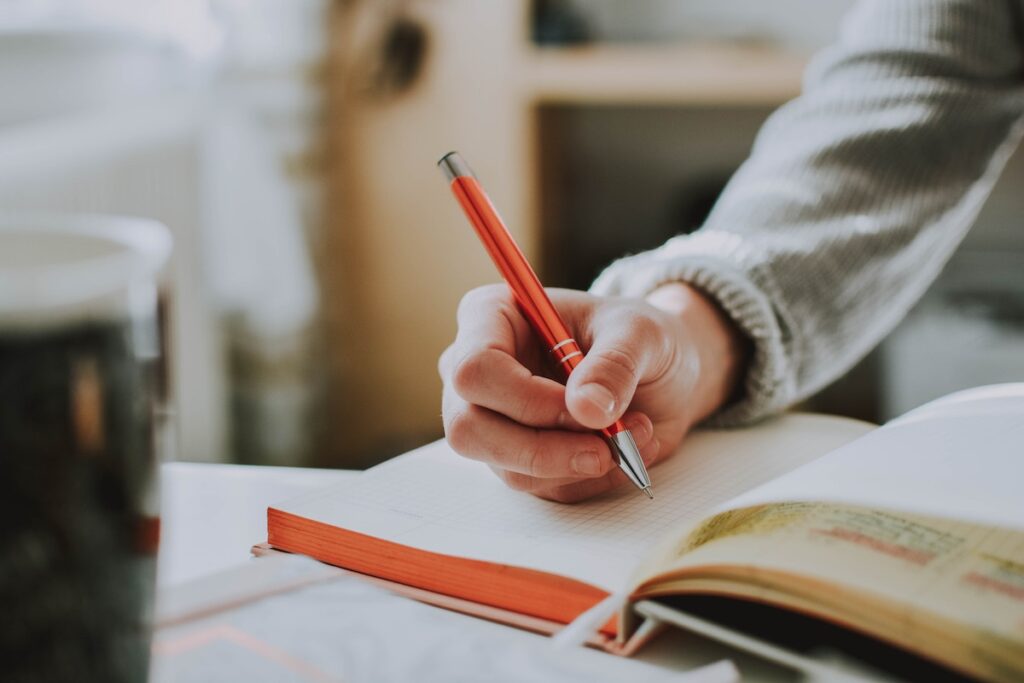
Conscious Incompetence: “I know I need to do some homework.”
Third, you have your conscious incompetence. This includes subjects, materials, and processes with which you have little experience and/or confidence. For me, this would involve clay. While I have fired many kilns in practice, I always open the lid with a little nervous apprehension. This is an area in which I do not hesitate to lean on others who hold greater experience and confidence.
Unconscious Incompetence: “I don’t know what I don’t know.”
Finally, there is your unconscious incompetence. This category is the hardest to identify because you are so far removed from the subject, material, or process you literally don’t know what you don’t know. Unconscious incompetencies are usually outside of your field. For instance, car maintenance would definitely be my unconscious incompetence. Relating this to the arts, however, I can also identify an unconscious incompetence with welding and metal in sculpture work.
Why is this Important?
Digging into your competencies can help you set professional learning targets and improve your practice.
The field of art education is chock-full of resources, events, and programs to help you as you pursue your goals. The Art of Education is one provider that boasts everything: daily articles, weekly podcasts, online conferences, graduate-level courses and professional development on demand. This plethora of offerings allows you to dabble in some topics while diving deeper into others.
For example, say you are unconsciously competent with curriculum development. Although it comes naturally to you, you may notice you need to revitalize some of your lessons. Why not enroll in the Designing Your Art Curriculum course? You’ll have a chance to dig deep to create an action plan to personalize student learning and ignite your students’ creativity.
Or, perhaps you are consciously competent when it comes to classroom management, but you know you could be doing even more to help your time with kindergartners run more smoothly. You might consider listening to the Everyday Art Room podcast to see what new tips you can pick up.
As a third example, you might find you are consciously incompetent when it comes to STEAM and Makerspaces and would love to learn more. Signing up for a conference might be just the thing to get your creative juices flowing! Consider Art Ed Now, where Kerri Waller will be presenting 6 STEAM Lessons Your Students Will Love. It just might be the push you need to take a closer look.
Finally, the AOE magazine and Art Ed PRO can be great ways to stumble upon your unconscious incompetencies. After all, you won’t know what you don’t know until you see it. Underwater photography? Using unexpected materials to engage students? Designing assessments students actually want to do? There are so many ideas to discover!
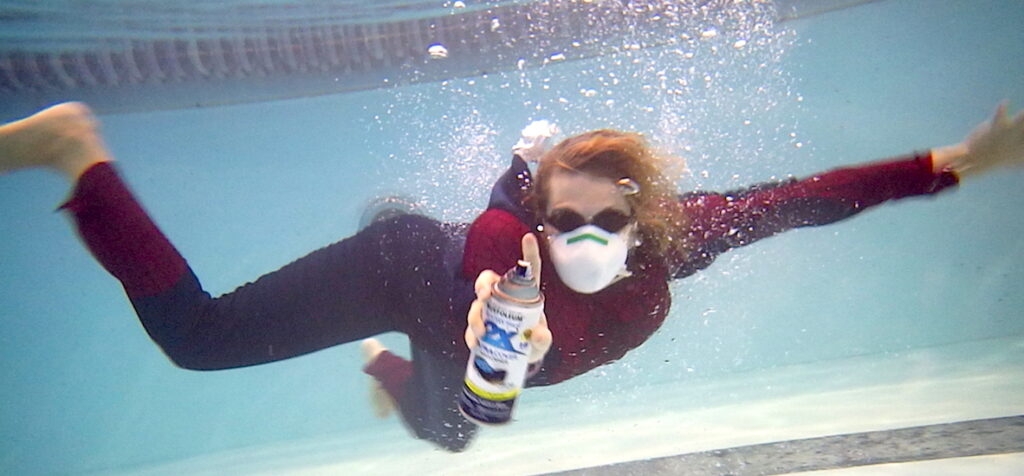
Implications for Students
The discussion of competence also applies to students as you reflect upon their readiness for certain processes. Engaging students in reflective activities in which they analyze and address their competencies can impact you and your instruction in dynamic ways. I often engage students in such competency conversations, followed by guided goal setting activities. This puts the power of learning in their hands.
Next Steps
Try filling out the “Addressing Your Competencies in the Art Classroom” handout with your personal and professional competencies in mind. Then, consider designing a similar reflective experience for students in your classroom. The results are sure to place you and your students on a trajectory toward personal and artistic success. Get ready for the competency ride!
In which areas of art ed are you super confident? Which would you like to learn more about?
What unconscious incompetencies have you discovered over time?
Magazine articles and podcasts are opinions of professional education contributors and do not necessarily represent the position of the Art of Education University (AOEU) or its academic offerings. Contributors use terms in the way they are most often talked about in the scope of their educational experiences.
